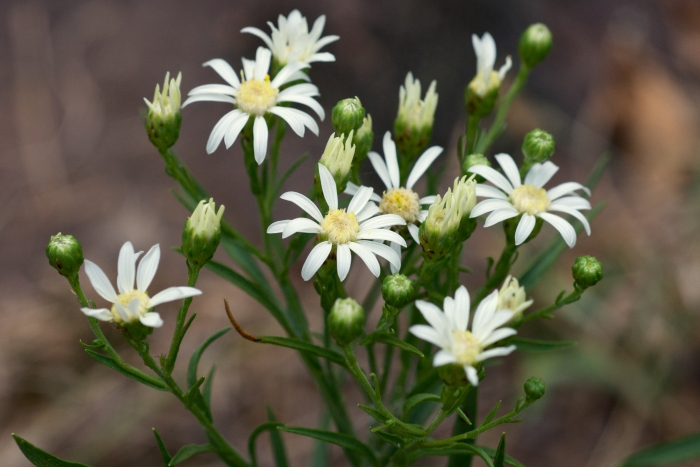Prairie Goldenrod
(Solidago ptarmicoides)
Prairie Goldenrod (Solidago ptarmicoides)
/
/

Eric Hunt
CC BY-SA 4.0
















































Estimated Native Range
Summary
Prairie Goldenrod is valued for its drought tolerance and ability to thrive in poor soils, making it a suitable choice for xeriscaping and naturalized areas. Its unique flower color among goldenrods makes it a striking addition to wildflower gardens, borders, and meadow plantings. It attracts pollinators such as bees and butterflies, contributing to the biodiversity of garden ecosystems. While it prefers full sun, it can tolerate light shade and is adaptable to a range of soil conditions, provided they have good drainage. It is not commonly afflicted by serious pests or diseases, but powdery mildew can occasionally be a problem in humid conditions.CC BY-SA 4.0
Plant Description
- Plant Type: Herb
- Height: 1-2 feet
- Width: 1-2 feet
- Growth Rate: Moderate
- Flower Color: White
- Flowering Season: Summer, Fall
- Leaf Retention: Deciduous
Growth Requirements
- Sun: Full Sun
- Water: Low, Medium
- Drainage: Medium, Fast
Common Uses
Bee Garden, Bird Garden, Butterfly Garden, Deer Resistant, Drought Tolerant, Groundcover, Hummingbird Garden, Low Maintenance, Rabbit Resistant, Showy Flowers
Natural Habitat
Native to dry prairies, open woodlands, and rocky outcrops
Other Names
Common Names: Upland White Aster, White Flat-Top Goldenrod, White Upland-Aster, Upland White Goldenrod, Upland White Solidago, Sneezewort Goldenrod, White Sneezewort, Verge-D’Or Faux-Ptarmica, Verge D’Or Faux-Ptarmica, White Upland Aster
Scientific Names: , Solidago ptarmicoides, Oligoneuron album, Aster ptarmicoides, Solidago asteroides, Unamia alba, Unamia ptarmicoides, Aster ptarmicoides var. georgianus, Heleastrum album, Aster albus
GBIF Accepted Name: Solidago ptarmicoides (Torr. & A.Gray) B.Boivin